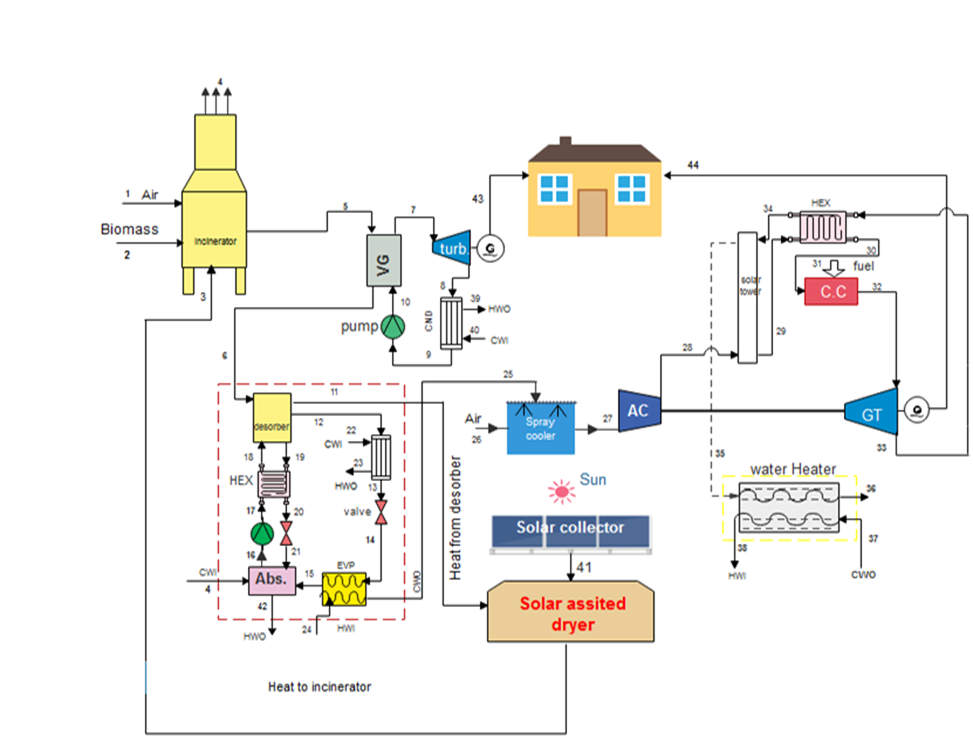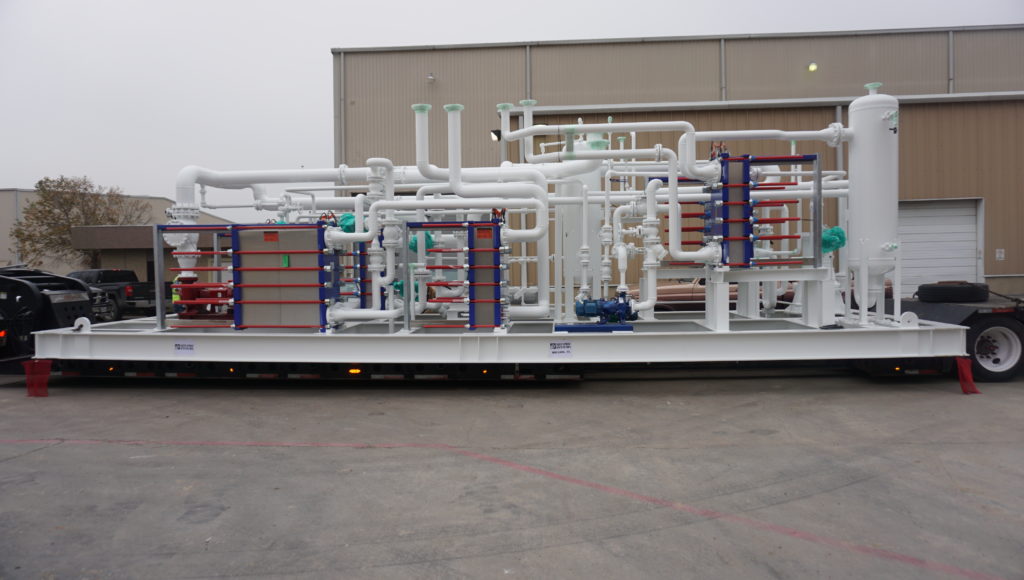Effect of Norozak (Salvia lerrifolia) biodiesel fuel on diesel engine performance

Downloads
Most energy is produced from fossil fuels, and the use of these fuels has increased over the past years. Fossil fuels are the main cause of global pollution and global warming. Using vegetable oils as alternative fuels for diesel engines is one of the ways to reduce pollutant emissions. Biodiesel from Norozak (Salvia lerrifolia) oil has been produced using a transesterification process. Biodiesel is mixed with diesel oil in different proportions B05, B10, B15, and B20. Biodiesel's physical and chemical properties are measured according to ASTM standards. A single-cylinder diesel engine is employed as the test engine in the present work. The torque, power, Special Fuel Consumption (SFC), and Exhaust Gas Temperature (EGT) are measured and compared with diesel oil. Torque, power, and EGT are larger, and SFC is lower for biodiesel mixture B05 than diesel fuel.
M. Asvad, A. Hajinezhad, A. Jafari, and S. F. Moosavian, "Multiscale kinetic modeling for biohydrogen production: A study on membrane bioreactors," International Journal of Hydrogen Energy, 2023.
A. Majnoon, A. Hajinezhad, and S. F. Moosavian, "Simulation model of carbon capture with MEA and the effect of temperature and duty on efficiency," Future Energy, vol. 3, no. 2, pp. 37-47, 2024.
M. Canakci, A. N. Ozsezen, E. Arcaklioglu, and A. Erdil, "Prediction of performance and exhaust emissions of a diesel engine fueled with biodiesel produced from waste frying palm oil," Expert systems with Applications, vol. 36, no. 5, pp. 9268-9280, 2009.
S. F. Moosavian, A. Hajinezhad, R. Fattahi, and A. Shahee, "Evaluating the effect of using nanofluids on the parabolic trough collector's performance," Energy Science & Engineering, 2023.
S. Sundarapandian and G. Devaradjane, "Performance and emission analysis of bio diesel operated CI engine," Journal of Engineering, computing and Architecture, vol. 1, no. 2, pp. 1-22, 2007.
H. Aydin and H. Bayindir, "Performance and emission analysis of cottonseed oil methyl ester in a diesel engine," Renewable energy, vol. 35, no. 3, pp. 588-592, 2010.
M. Shehata and S. A. Razek, "Experimental investigation of diesel engine performance and emission characteristics using jojoba/diesel blend and sunflower oil," Fuel, vol. 90, no. 2, pp. 886-897, 2011.
H. Hazar, "Cotton methyl ester usage in a diesel engine equipped with insulated combustion chamber," Applied Energy, vol. 87, no. 1, pp. 134-140, 2010.
N. Panwar, H. Y. Shrirame, N. Rathore, S. Jindal, and A. Kurchania, "Performance evaluation of a diesel engine fueled with methyl ester of castor seed oil," Applied Thermal Engineering, vol. 30, no. 2-3, pp. 245-249, 2010.
S. Jaichandar and K. Annamalai, "Effects of open combustion chamber geometries on the performance of pongamia biodiesel in a DI diesel engine," Fuel, vol. 98, pp. 272-279, 2012.
S. Gill, A. Tsolakis, J. M. Herreros, and A. York, "Diesel emissions improvements through the use of biodiesel or oxygenated blending components," Fuel, vol. 95, pp. 578-586, 2012.
J.-H. Tsai et al., "Emission reduction of NOx, PM, PM-carbon, and PAHs from a generator fuelled by biodieselhols," Journal of hazardous materials, vol. 274, pp. 349-359, 2014.
Y.-C. Lin et al., "Approach for energy saving and pollution reducing by fueling diesel engines with emulsified biosolution/biodiesel/diesel blends," Environmental science & technology, vol. 42, no. 10, pp. 3849-3855, 2008.
A. Atabani et al., "A comparative evaluation of physical and chemical properties of biodiesel synthesized from edible and non-edible oils and study on the effect of biodiesel blending," Energy, vol. 58, pp. 296-304, 2013.
M. Mittelbach, "Diesel fuel derived from vegetable oils, VI: Specifications and quality control of biodiesel," Bioresource technology, vol. 56, no. 1, pp. 7-11, 1996.
S. Saravanan, G. Nagarajan, G. L. N. Rao, and S. Sampath, "Combustion characteristics of a stationary diesel engine fuelled with a blend of crude rice bran oil methyl ester and diesel," Energy, vol. 35, no. 1, pp. 94-100, 2010.
R. Misra and M. Murthy, "Jatropa—the future fuel of India," Renewable and Sustainable Energy Reviews, vol. 15, no. 2, pp. 1350-1359, 2011.
K. Abed, M. Gad, A. El Morsi, M. Sayed, and S. A. Elyazeed, "Effect of biodiesel fuels on diesel engine emissions," Egyptian journal of petroleum, vol. 28, no. 2, pp. 183-188, 2019.
A. Hajinezhad and S. S. Hosseini, "Ultrasound assisted biodiesel production from Eruca Sativa as an indigenous species in Iran," International Journal of Renewable Energy Research (IJRER), vol. 7, no. 2, pp. 556-564, 2017.
A. Hajinezhad, S. S. Ahmadi, and H. Alimoradiyan, "Feasibility analysis of using novel Sepanta biodiesel fuel as an additive to gas micro‐turbine fuels: An experimental study," Energy Science & Engineering, vol. 10, no. 4, pp. 1120-1131, 2022.
A. Ghahremani, M. Jafari, M. Ahari, M. Saidi, A. Hajinezhad, and A. Mozaffari, "Spray characteristics and atomization behavior of bio-diesel (Norouzak) and diesel fuel blends," Particulate Science and Technology, vol. 36, no. 3, pp. 270-281, 2018.
A. Gholami, F. Pourfayaz, A. Hajinezhad, and M. Mohadesi, "Biodiesel production from Norouzak (Salvia leriifolia) oil using choline hydroxide catalyst in a microchannel reactor," Renewable energy, vol. 136, pp. 993-1001, 2019.
A. Hajinezhad, S. Abedi, B. Ghobadian, and Y. Noorollahi, "Biodiesel production from Norouzak (Salvia lerifolia) seeds as an indigenous source of bio fuel in Iran using ultrasound," Energy Conversion and Management, vol. 99, pp. 132-140, 2015.
Y. Aliabadi, A. Hajinezhad, R. Fattahi, and S. F. Moosavian, "Analysis of energy generation from MSW with auxiliary feed in the north of Iran," Results in Engineering, vol. 18, p. 101185, 2023.
M. Shoaei, A. Hajinezhad, and S. F. Moosavian, "Design, energy, exergy, economy, and environment (4E) analysis, and multi-objective optimization of a novel integrated energy system based on solar and geothermal resources," Energy, p. 128162, 2023.

















